Cambodia’s Indigenous ecotourism weighed down by virus fears
Tourism has helped remote Indigenous communities improve their lives and protect the forests. COVID-19 has put both at risk.
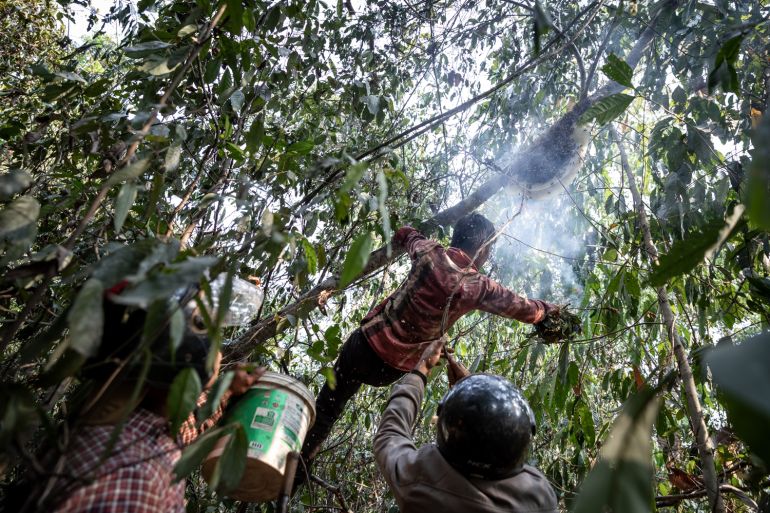
Banlung, Cambodia – When her two teenage daughters started going to high school three years ago, Thong Samai began selling traditional wine that she makes with herbs gathered from the forest to sell alongside soft drinks at the entrance of Yeak Laom, a sacred lake that has become a popular ecotourism destination in eastern Cambodia.
It is early March and the largest wave of COVID-19 to hit the country is just starting – although no one knows yet just how bad it will get – and Samai watches as a group of domestic tourists stream out of a bright white van, and walk past her stall on their way to the lake’s edge.
Keep reading
list of 4 itemsCOVID variant pushes Cambodia to brink of ‘national tragedy’
Cambodia reports first COVID death amid new outbreak
All coronavirus patients recover in Cambodia, no cases for weeks
“They [tourists] are afraid to go near me, and I’m also afraid they could give me COVID, but I still take the risk to run the business,” she told Al Jazeera.
Making between 70,000 and 100,000 riels ($17.5 – $25) on a good day, 40-year-old Samai, part of the Indigenous Tompoun community that runs the lake, says the income from her stall helped ensure her daughters could continue going to school.
But earnings have dried up since the start of the pandemic and during this month’s Khmer New Year, Cambodia’s biggest holiday, the lake was closed completely.
The pandemic – escalating again in Cambodia and forcing lockdowns in Phnom Penh and other hotspots – has been a continuing strain for Indigenous communities in the country’s Ratanakiri province, for whom the additional income from their natural and spiritual landmarks is critical to their financial survival and the health of their forest home.
Cambodia’s Indigenous groups make up less than two percent of the population and mostly live in in the hilly and forested northeast provinces such as Ratanakiri.
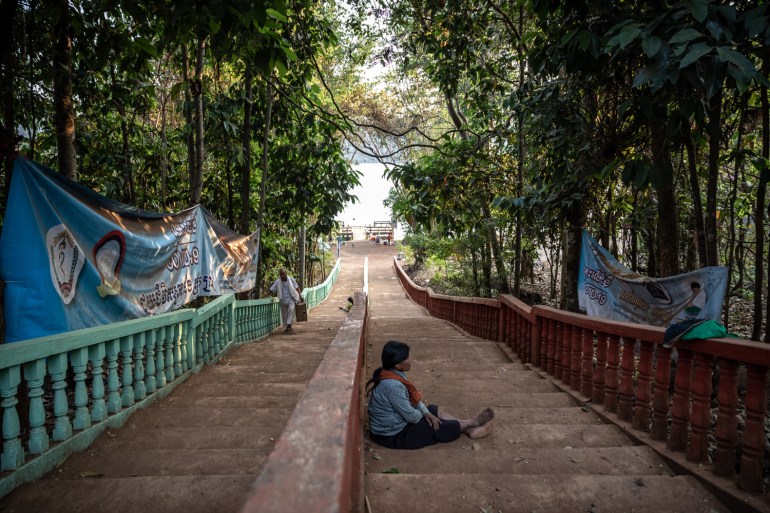
But they are frequently pitted against agroindustrial companies with long-term leases that want to clear forests and plant commodity crops like rubber, encroaching onto the land that Indigenous people have tended for generations.
In the past, Indigenous communities used rotational agriculture and lived isolated from “lowland” Cambodians. But when outsiders began moving to Ratanakiri more than 20 years ago for the open land and job opportunities, Indigenous communities also began plantation-style farming and trying to earn income in other ways.
Ratanakiri province has lost nearly 30 percent of its tree cover – approximately 240,000 hectares (593,000 acres) – since 2000, and 43 percent of the loss was from primary forest, according to Global Forest Watch.
Many communities have come to regret the loss of the forests that mark their land.
They hoped ecotourism would provide them with a way not only to generate a little money but also to protect some of their remaining forest.
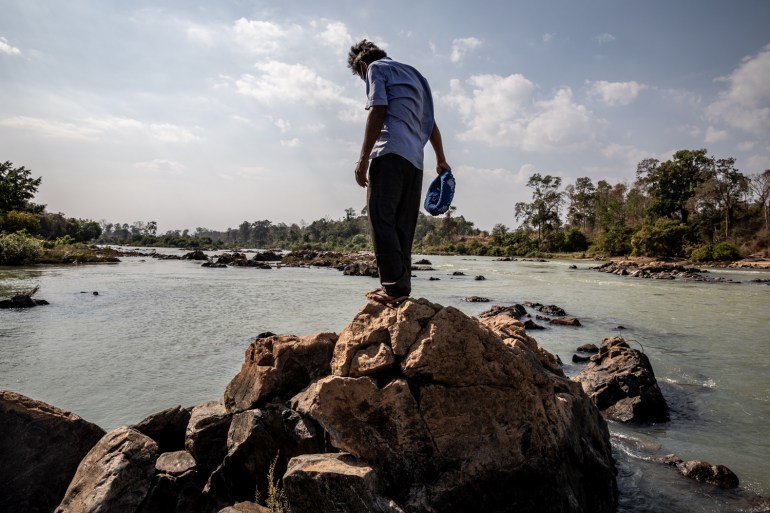
Close to Cambodia’s border with Vietnam, three villages from the Jarai Indigenous community have been stirred by hydropower dams along the Sesan River for more than 10 years but their bigger fear now is deforestation, which they hope tourism can stop.
Eang Vuth, 49, is not Jarai, but has become a part of the Indigenous Pa Dal village after arriving in 2009 to study and protest the effect of hydropower dams on the Sesan. In the last two years, he has noticed a company clearing some of the remaining thick forest in between Pa Dal and neighbouring Pa Tang village.
‘Bad people’
Vuth is now working with volunteers from the villages to transform two forested islands in the Sesan River into ecotourism sites where visitors can relax, swim and fish, hoping the project will stop companies from felling the trees for timber.
“We can make some profit from these places … We can use that as a result to show the government that the community here can make some income from the place, so if there is any company wanting to come here and do something, we will report that,” he said, although he worried in March whether the pandemic would curb its potential to attract tourists.
A fisher in Pa Dal village and a friend of Vuth, Galan Lveng, 55, sees ecotourism as one of the few ways to stop clearcutting in their village, and save some of the forest for the village’s young people.
“I’m afraid of losing the forest because bad people are always around, keeping an eye on it,” he said. “If these [ecotourism] plans happen, I’m sure we in the community will get involved. If we can save the trees, I will be so relieved.”
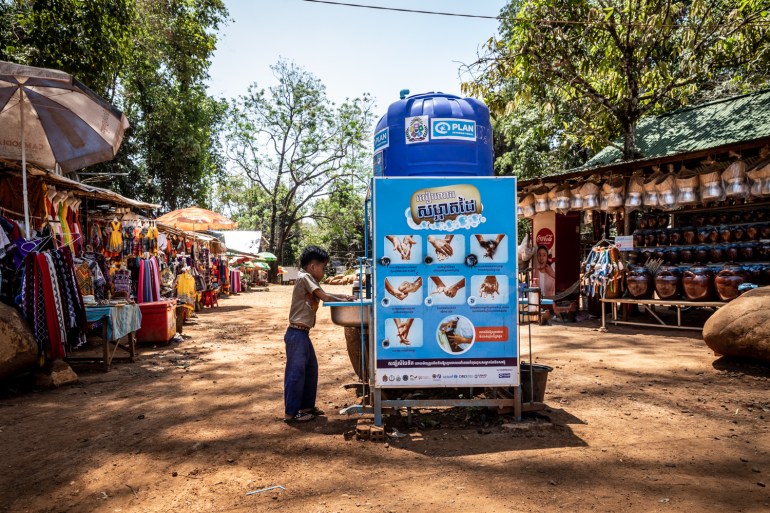
Ecotourism has already made a difference in protecting the forest surrounding Yeak Laom lake where Samai has her stall.
Community ecotourism leader Nham Nea says his Tompoun Indigenous community began welcoming tourists and running businesses around the lake in 2000.
At the same time, Cambodians from other provinces began to take an interest in the villages’ land, buying it or compelling Indigenous families to get “soft titles” – unofficial deeds given out by local authorities – and sell the community land.
Because pieces of the villages were privately sold, the Tompoun residents of Yeak Laom could never get a communal land title but after years of asking, 225 hectares (556 acres) of forest and lake were granted protected area status in 2018, and Nea says the community has seen very few stumps – or loggers – on their patrols since then.
A few times a month, members of the Yeak Laom ecotourism committee trek a circular path through the area’s protected forest, looking for signs of logging. On one of the patrols in February, the Tompoun patrollers pointed out a rat trap worked into a small fence and confiscated a tangle of rattan wires used to catch wild chickens but found no new stumps or clearings.
To Nea, the threat of logging has been part of the community’s decision to keep Yeak Laom open to visitors during the pandemic. The site was open through most of last year except for the Khmer New Year, when a travel ban was imposed and all tourism sites ordered to close.
“We have many big trees, so if we pause there will be people taking the opportunity to come and cut the trees, so we are also worried about this,” he said. “But if the government orders us to close, we will do as they say.”
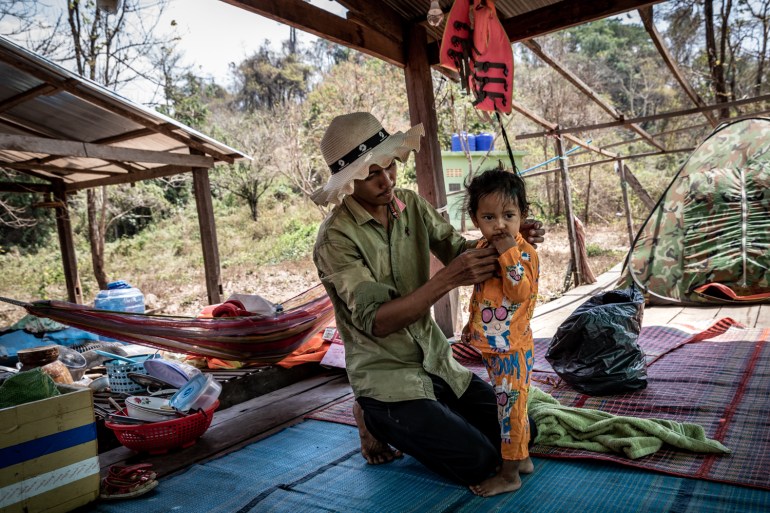
Some 60 kilometres (37 miles) drive away, Buli Mi is trying to develop Lumkud, another lake and protected area run by three Tompoun villages, into an attraction like Yeak Laom. To 39-year-old Mi, keeping Lumkud’s ecotourism site open through the pandemic is both to stop illegal logging and earn income to support the neighbouring villages.
Costs up, income down
In between orders of papaya salad and strawberry-flavoured energy drinks, Ly Kimky explains that he has had to reduce his open-air stand’s stock during the pandemic to save money. He, his wife and their toddler live between his in-laws’ home and Lumkud, sometimes sleeping in a tent close to the lake so they can prepare the food stall early.
But the 29-year-old says it is better than working as a farmer, echoing complaints about bad weather conditions for farming and falling cashew and cassava prices heard across Ratanakiri’s tourism sites.
“If I work in farming, that will be difficult for me, maybe I won’t have enough food,” he said. “Here, I can eat the leftovers.”
Budgeting enough to keep the lake running is a challenge each month during COVID-19, Mi said.
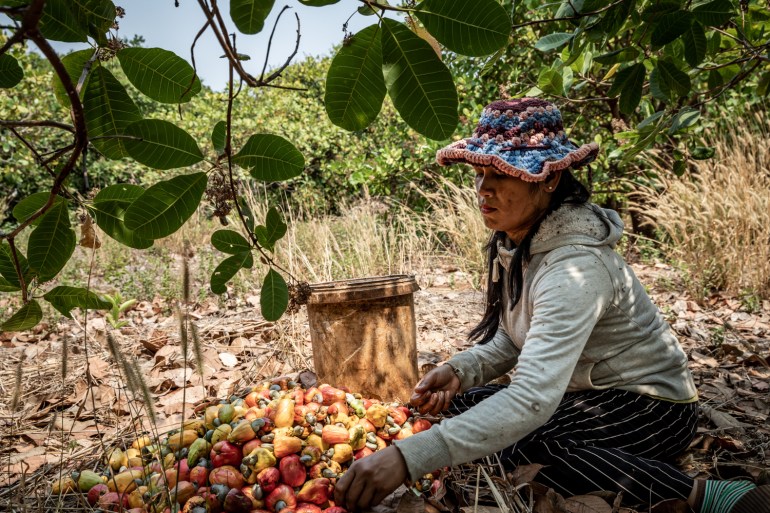
He has had to hire more people to check visitors’ temperatures at the entrance and spray sanitiser as required by the Health Ministry, even as the number of visitors has declined.
Monthly profits have fallen from 2 million Cambodian riel to about 1.5 million ($500 to $375) and by March the park had been running at a loss for almost 12 months, he said.
“We haven’t reached a point where we have to close it yet, but we face financial problems and we have to find a solution,” he said in early March.
The sites at Lumkud and Yeak Laom closed a couple of weeks later.
Nea says his village had previously shut its doors to outsiders at the beginning of the pandemic, adding that his and other Indigenous communities had become more cautious about infectious diseases after losing many members to an outbreak of cholera 20 years ago.
“Because we have faced this kind of event before, we are not like the people from the city, so if we see something weird happening [like an illness], we will make a ceremony to close the villages,” he said.
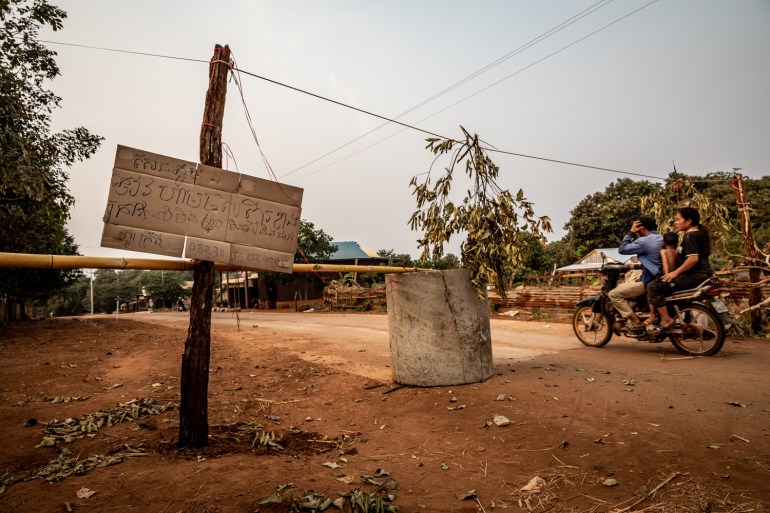
Still, even as they preserve their own culture and spiritual practices, they are looking forward to reopening once the pandemic has eased.
The success of the ecotourism sites – in addition to farming – has made the villagers lives much easier, with the increased income allowing them to buy motorbikes and phones.
“Time changes people, and when they see how Khmer live, they like it more and it’s more fun, easier and cleaner to live,” Nea said. “Updating [ourselves] to live like the Khmer doesn’t mean we abandon our religion.”
This project was created with the Cambodia Media Grant, launched by the Angkor Photo Festival & Workshops and part of the Mekong: Sustainable News project implemented by CFI, the French media development agency, with the support of the French Ministry of Europe and Foreign Affairs.